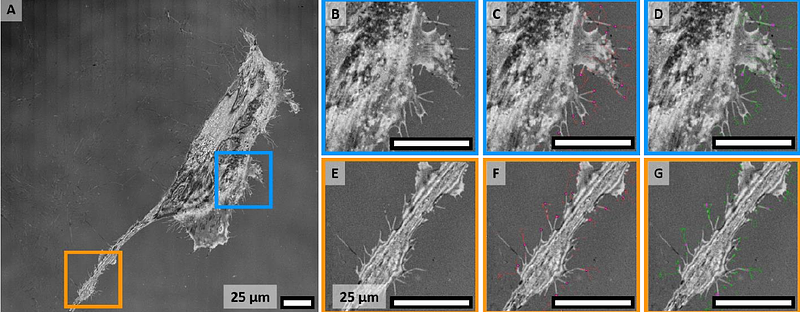Structure and dynamics of human cardiac fibroblast nanotubes

Structure and dynamics of human cardiac fibroblast nanotubes
Schmid-Herbstritt, S. C.; Stief, G.; Greiner, J.; Felekary, A.; Madl, J.; Zeidler, V.; Heer, J.; Iaconianni, P.; Koch, M.; Kollmar, K.; Walz, C.; Nubling, S.; Kok, T.; Pronto, J. R.; Kutschka, I.; Voigt, N.; Morgan, G.; Dienert, J.; Brox, T.; Briquez, P.; Peyronnet, R.; Rohrbach, A.; Kohl, P.; Rog-Zielinska, E. A.
AbstractEfficient and dynamic interactions between cardiac fibroblasts and their environment are essential for the maintenance of tissue homeostasis in healthy hearts and play an important role during pathological remodelling. Here, we investigate a relatively obscure mechanism through which human atrial fibroblasts communicate with each other, with other cells, and with the extracellular component - membrane nanotubes (MNT). We investigated MNT structure and dynamics in primary right atrial fibroblasts isolated from patients in sinus rhythm (SR) and atrial fibrillation (AF), as well as immortalised human atrial fibroblasts cell line, and intact human tissue, using a wide range of imaging approaches (including confocal microscopy, label-free reflection microscopy, rotating coherent scattering microscopy, and cryo-electron tomography). We show that fibroblasts maintain continuous MNT activity in vitro, with numerous protrusions constantly probing the surrounding environment. MNT structure and activity change during AF and following pharmacological (transforming growth factor-beta, latrunculin B) and environmental (hypoxia) interventions. We also show that cardiac fibroblast MNT mediate intercellular organelle exchange and dynamically interact with collagen fibres. Finally, we present evidence for the presence of fibroblast-borne MNT in human atrial tissue. Our results advance our understanding of how cardiac fibroblasts interact with their environment. MNT are versatile structures capable of both sensory and actuating functions, and offer a dynamic and rapid communication conduit that facilitates cell-cell and cell-extracellular matrix interactions.